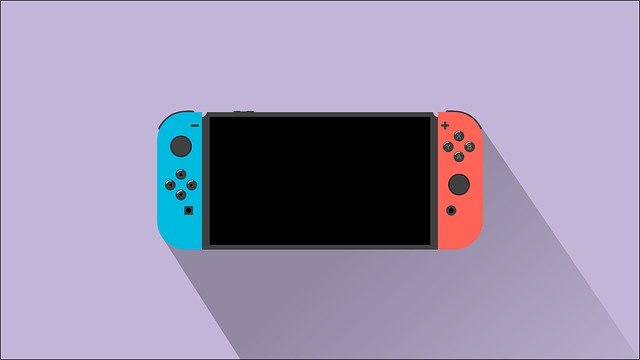If great power comes burdened with great responsibility, then great licences like Star Wars or Marvel Comics seem to come burdened with mixed results. At least, that appears to be the case when they’re being adapted into video games.
In terms of Marvel specifically, the “House of Ideas” has made a pretty capable transition into the realm of movies, but its gaming output remains very inconsistent to this day. For every Guardians of the Galaxy, there is a mindless button-masher based on the Thor films, and for every Ultimate Alliance, there is a microtransaction-laden Avengers game that sucks any semblance of joy out of playing as Earth’s mightiest heroes.
Of all the Marvel properties, Spider-Man has undoubtedly fared best, with at least 3 or 4 excellent titles to his name. Yet, even then, there are inevitably some turkeys that let the side down.
The web-head has over 30 years of gaming history for you to sift through, with nearly 40 separate releases that span arcade cabinets, movie tie-ins, handheld ports and mobile downloads. So how do you know which of his adventures are actually worth your time?
To help you separate the truly amazing entries from those that will have you leave you crying “Spider-Man no more,” Newsweek has put together this definitive list.
While you are here, you might want to check out our similar retrospective on the back catalogue of 007, with our list of the best and worst James Bond games.
The Worst – ‘Spider-Man: The Video Game’ (1991)
“Spider-Man: The Video Game” was a 2D brawler that didn’t really channel the spirit of its titular character, or any of the other playable superheroes.
Sega
In the early ’90s, side-scrolling beat ’em ups like Teenage Mutant Ninja Turtles and Streets of Rage were guzzling quarters by the bucketload across the nation.
Keen to get a slice of this action, Sega partnered up with Marvel to bang out a quick cash-in that utilized some of the comic-book publisher’s most recognizable heroes. The problem, however, was that a rival company (named Acclaim Entertainment) already owned the exclusive legal rights to use the more popular characters from the roster, which is why Spider-Man: The Video game ended up relying on such a motley B-team.
Sega was forced to cobble together a cooperative experience using whatever leftover IP Acclaim wasn’t bothering with. That’s why we got this slapped together line-up of heroes that aren’t really compatible in any meaningful way. You had the wall-crawler himself, street-brawler Hawkeye, jewel thief Black Cat and the prince of Atlantis himself, Namor the Sub-Mariner.
It’s easy to imagine that there must have been squabbles aplenty over who got to play as Spider-Man in this scenario, and who had to settle for one of the other rejects. Not that it made a lick of difference who you picked anyway, as each of the fighters controlled exactly the same, had re-skinned versions of identical powers, and ambled around at a snail’s pace. They even uniformly shared Peter Parker’s super-adhesion abilities and could inexplicably climb up walls (which is particularly odd for the powerless-Hawkeye).
In his damning let’s play video of the game, James Clement (aka Mr Sunday Movies) said: “They all play exactly the same […] It’s one of those games designed to chew quarters and you can’t really beat it on one playthrough without chucking in 10 bucks”.
Worst – ‘The Amazing Spider-Man 2’ (2014)
From a visual standpoint, “The Amazing Spider-Man 2” does not meet the standards of a game from 2014.
Beenox
To their credit, Beenox actually did a pretty good job with the first Amazing Spider-Man tie-in. Instead of just regurgitating the events of the film, they provided an intriguing epilogue that saw you patrolling the streets of New York to round up what was left of the Lizard’s discarded genetic experiments.
It was by no means a classic (hence why it’s not featured anywhere on this list), but it was serviceable enough with tight gameplay and a few memorable set pieces. Alas, the same cannot be said for its immediate follow up, which was a marked step down in almost every department.
Upon release, The Amazing Spider-Man 2 was lambasted for its gruelling loading times, simplistic combat, dated visuals and an unwieldy camera that felt like more of an adversary than any of the supervillain bosses.
Worst of all, it took the one thing that really worked about the previous game—it’s web-swinging—and turned it into a joyless ordeal. In what was presumably supposed to be an evolution of the original controls, you had to use both the left and right shoulder buttons to operate the corresponding web-shooters on Peter’s wrists. While that might sound intuitive, in practice it was just plain awkward.
This problem is summed up brilliantly by Eurogamer’s Dan Whitehead, who complained: “Getting around this digital Manhattan is now just enough of a faff for the enjoyment of simply swinging to be diminished. Turning corners is now just fiddly enough to not be fun. Precision movements are a chore rather than a challenge. Crucially, it’s just not fun.”
When even the web-swinging isn’t enjoyable in a Spider-Man game, then you know you’re in deep trouble.
Worst – ‘Spider-Man 2’ PC Version (2004)
On the PC, your swinging and wall-crawling abilities were reduced to point-and-click mechanics.
Activision
Spider-Man 2 originates from that era where licenced tie-ins shipped in multiple versions for multiple systems, many of which were developed on separate engines and by entirely different teams.
This often led to bizarre situations where you got wildly diverging review scores for games depending on the platform. While the PS2 edition of something might have been great, that had no bearing on whether its Game Boy Advance equivalent would rise to the same level of quality. Other than the fact that they shared a name, some iconography and perhaps the box art, these titles would have almost nothing in common.
Such was the case with the Spider-Man 2, which was an acclaimed open-world blockbuster on consoles, yet that hype must have seen completely unwarranted if you were unlucky enough to try it on PSP or Microsoft Windows.
The handheld port was a bog-standard action game that simply regurgitated events of the movie. While that was mostly inoffensive, PC gamers got a much, much worse deal. Their version of Spider-Man 2 was a linear beat ’em up that severely restricted your movement controls and was very fussy about where you could actually go in the city.
Gone was the sense of freedom that made the console version so invigorating. Here, you could only swing to predetermined locations if there was a visual prompt letting you do so. Likewise, the combat was overly simplistic, the wall-crawling was barely functional, and the free roam was totally non-existent.
As Dan Adams warned in his contemporary review of the port: “Spider-Man 2 for the PC is a totally different game than Spider-Man 2 for the GameCube, PlayStation 2, and Xbox. Do not be fooled by the boxes that [look] the same. Get the console version in whatever form you like. Even if you’re a child. If you’re shopping for a 4-year-old, go buy something different altogether.”
In short, the PC version of Spider-Man 2 is the perfect representation of that “we have pizza at home” meme. On a surface level it’s kind of the thing that you want, but it’s really not the same.
Worst – ‘Spider-Man: Edge of Time’ (2011)
“Spider-Man: Edge of Time” felt like a huge step backwards after the superior “Shattered Dimensions”.
Beenox
A lacklustre follow-up to the infinitely superior Shatter Dimensions (more on that one later), Spider-Man: Edge of Time bafflingly strips out content from its predecessor and doesn’t even replace the missing elements with anything new.
The first game had you frenetically zipping around the Spiderverse, controlling four different versions of the web-head. Each of these protagonists had their own uniquely designed worlds, idiosyncratic personalities, larger-than-life villains, and cool mechanics. For example, the Spider-Man Noir levels were rendered through a black and white filter and necessitated a more stealthy approach, while the Ultimate version of Peter Parker was able to run amok with the heightened powers of the symbiote suit.
Edge of Time inexplicably whittled that experience down to just two spider-people (the traditional “Amazing” variant and Miguel O’Hara from the future of 2099) who aren’t even that different from one another. They both have very similar combos, animations and underlying abilities so, if you absolutely had to cut a pair from the roster, it should have been these two!
You’d think that a sequel would want to expand upon the premise of its forbear by increasing the number of superheroes you control. Yet this is quite literally half the game that Shattered Dimensions was.
It doesn’t help either that the unforgivably short campaign was built on a foundation of repetitive busywork. As IGN pointed out in their scathing review: “You deactivate switches. You destroy generators. You collect keys. It’s the obscene banality of these tasks, and their seemingly interchangeable nature, that really undermines the scope and grandeur of the plot.”
The word “banality” should never be appropriate for describing a Spiderverse game, yet it unfortunately fits like a glove in this instance.
Best – ‘Spider-Man: Shattered Dimensions’ (2010)
In “Spider-Man: Shattered Dimensions” you got to control 4 different spider people, each with their own unique art styles, abilities and storylines.
Beenox
A year before Edge of Time came along and delivered an underwhelming Spiderverse game, Shattered Dimensions absolutely nailed the concept.
While it didn’t have the expansive open-world design that many had come to expect from Spider-Man games, it did offer a perfectly paced story that kept mixing things up from level to level. One minute you’d be skulking around the rafters of a chiaroscuro train station as Spider-Man Noir, the next you could be dexterously weaving between an oncoming motorcade of hover vehicles in 2099 or fighting against Deadpool in the Ultimate universe.
Like the A.V. Club articulated in their B+ review of the game: “[It’s] filled with countless remember-when moments—as in ‘Remember when you outran that wave of sand?”
What developer Beenox got right here was that each spider-person felt totally unique, as did their respective adventures. Even the vanilla “Amazing Spider-Man” world had a 1960s comic-book aesthetic (complete with Ben-Day dots) that looked as though it had been ripped straight from the four-color pages of a vintage issue.
For those who grew up reading the source material, this was one of the most authentic experiences you could get and it really tapped into the latent potential of the Spiderverse idea (long before the animated movie, which was indirectly inspired by this game, came along).
Best – ‘Ultimate Spider-Man’ (2005)
In “Ultimate Spider-Man” players were able to control both the webslinger himself and his nemesis Venom.
Activision
Fondly remembered as “the one that lets you play as Venom,” Ultimate Spider-Man was a fairly typical example of the open-world superhero offerings that came out in the early noughties.
It had all the usual collectables, crime-in-progress events, time trial races and combat challenges, and nothing particularly stood out as innovative or new. However, it’s one of those games that just perfected the fundamentals (namely the combat and traversal mechanics) in such a way that you didn’t really mind doing the same thing over and over again.
It also had the distinction of being integrated with Marvel’s Ultimate imprint, actually plugging a gap in one of the Spider-Man arcs that was releasing at the time. It even shared the same author as the books, Brian Michael Bendis, to add a greater sense of continuity to proceedings.
For fans of that comic run, Ultimate Spider-Man was a great companion piece that helped flesh out certain plot points, developed the characters and set up future storylines. Plus, the developers successfully made it look consistent with the print series, by utilizing impressive cel-shaded graphics and dynamic split-screen panels.
To reiterate the most salient point though, you were able to control Venom and got to embark on a feeding frenzy around Manhattan.
Best – ‘Spider-Man’ (2000)
“Spider-Man” on the PSone is fondly remembered to this day, thanks to its fun story, enjoyable combat and tight platforming.
Activision
Often referred to as the first good Spider-Man game, Neversoft’s stab at the franchise is still enjoyable to this day, even if some of the technical aspects feel a tad archaic.
Predating the complex open worlds of later installments, this is just a humble platformer with bitesize stages that each have their own unique gimmicks. For example, in one level you are hunted down by the police and must scale a towering building while avoiding gunfire, and in another one you have to safely dispose of bombs before a countdown timer reaches zero.
Every stage is enjoyable in its own right, yet it’s the boss fights that really stand out here. Players will get to challenge an iconic rogue’s gallery that includes the likes of Venom, Doctor Octopus, Scorpion, Carnage, Mysterio and Rhino, all of whom have their own unique weaknesses for you to learn and exploit.
In comparison to what came later, Spider-Man 2000 might seem rather quaint. Nevertheless, the things that worked about it (including its combat, platforming and exciting story) are utterly timeless. As IGN said in their write-up: “Spider-Man is a game that will surprise and delight anyone who buys it. It truly is the first real 3D realization of your favorite web-head.”
Best – ‘Spider-Man: Miles Morales’ (2020)
“Spider-Man: Miles Morales” has a cosy winter feel that sets it apart from other games in the series.
Insomniac Games
We already have a detailed review explaining why Spider-Man: Miles Morales is so incredible but, to summarize, it’s one of the top exclusives that you can get for the PlayStation 5.
The next-gen graphics are second-to-none (especially when you activate ray-tracing), the protagonist switch is refreshing, the gameplay is supremely addictive, and it makes terrific use of its festive New York setting.
That last point is worth focussing on, given that anybody with even the slightest interest in video games has likely explored the five boroughs to death by now. We’ve all seen digital recreations of Brooklyn and Queens a thousand times before (often in Spider-Man titles), but here—with all the elaborate Christmas decorations, gently cascading snow and shopping mall grottos—it genuinely looks brand-new.
The only thing holding Miles Morales back is the fact that it struggles to justify its hefty cost. With just 17 main missions, the main story can easily be wrapped up in under 8 hours and it doesn’t evolve much upon Insomniac’s previous Spider-Man outing, other than by introducing Miles’ bioelectricity abilities.
Instead, it feels more like glorified Downloadable Content (DLC) that was marketed as a $60 product, with some critics accusing it of being overpriced for this very reason. Yet, as far as glorified DLC goes, Miles Morales is extremely impressive and showcases what can be accomplished with characters like Spider-Man when you take advantage of next-gen hardware. If this is anything to go by, then the future of the superhero genre is bright indeed.
Best- ‘Spider-Man 2’ Console Version (2004)
The console version of “Spider-Man 2” is known for being one of the best movie-to-game adaptations of all time.
Activision
Although the PC port was an unmitigated train wreck, the console version of Spider-Man 2 is frequently hailed as being one of the greatest movie tie-ins ever made.
It hasn’t aged quite as gracefully as you might hope—on account of its dated mission design and tedious side-objectives—but it still set the benchmark for comic book adaptions and the level of quality towards which they should aspire.
It’s a ridiculed cliché of games journalism to say that a superhero title makes you feel like its protagonist, but there’s no getting around it here. That’s the defining attribute of Spider-Man 2 and the reason why it’s so beloved.
Before this, no other entry in the franchise had managed to capture the thrill of having Peter Parker’s enhanced agility so wonderfully. Whether you were leaping from the tallest skyscrapers, sprinting up walls or performing dizzying summersaults in mid-air, it all felt so good.
This fluidity of movement was identified by many critics as the title’s greatest asset. For example, GameSpy’s Will Tuttle wrote: “The best part […] is the new swinging mechanic. The development team at Treyarch focused a lot of their attention on making sure that the web-slinging felt realistic. Since so much of the game is spent [jumping] from building to building and cruising through the concrete canyons of New York City, it was essential that the controls were easy to use, and they are.”
None of that is to say that the rest of Spider-Man 2 doesn’t hold up. Yet when most people think back on this classic, it isn’t really the story mission that they remember fondly, but rather the unadulterated joy of getting to them in the first place.
Putting on the Spidey costume never felt quite this magical again. That was until our next entry came along.
The Best – ‘Marvel’s Spider-Man’ (2018)
“Marvel’s Spider-Man” is everything you could ever want from a superhero game.
Insomniac Games
Aside from the colorful costume and fantastic powers, the core appeal of Spider-Man is that he’s an unwavering trier.
No matter how often life kicks him down—with financial woes, mounting pressures and romantic hardships—he always finds the inner strength to pick himself back up. That’s what is so inspiring about this character and why he has managed to stay relevant for kids after all the years (despite having origins as an argyle sweater-wearing dork in the 1960s). Everyone wishes they could be as resilient as he is when they experience difficulties of their own.
Stan Lee often spoke about how Peter Parker was meant to be a character with relatable, soap opera problems and that’s something that Insomniac’s Spider-Man adaptation truly understands. Probably better than any of the movies.
In the game, you control a 23-year-old Peter Parker who is really down on his luck after leaving high school. He can’t afford to pay the rent, he has become estranged from Mary Jane, and the funding for his research project could fall through at any minute. In addition to all these headaches, he’s also got to keep up with the whole masked crusader gig, which has become a lot more hectic ever since the Kingpin was sent to prison and left behind a power vacuum for other gangs to fill.
It’s a riveting and expertly crafted narrative that’s packed with believable relationship drama, compelling twists, and rousing heroics. It even manages to find time for both Doc Ock and Miles Morales origin stories, without ever feeling cluttered or unfocused.
Of course, it is all well and good having a gripping story, but this is a game first and foremost. One that is meant to be played. Luckily, Spider-Man excels on that front too, with satisfying combat that never gets old, exhilarating web-swinging mechanics, surprisingly decent stealth encounters, and plenty of optional content that actually feels fun, rather than like obligatory padding.
An over-reliance on quick-time events aside, this is almost a perfect package and remains the gold standard by which all other superhero games should be measured. It’s so exceptional that it even managed to win over the notoriously cynical Yahtzee “Zero Punctuation” Crowshaw, who named it as one of his favorite releases of 2018. This sentiment was also echoed by the likes of The Verge, Wired and us at Newsweek, all of whom gave it glowing endorsements.
Source: https://www.newsweek.com/spider-man-best-worst-video-games-ranked-1659356



